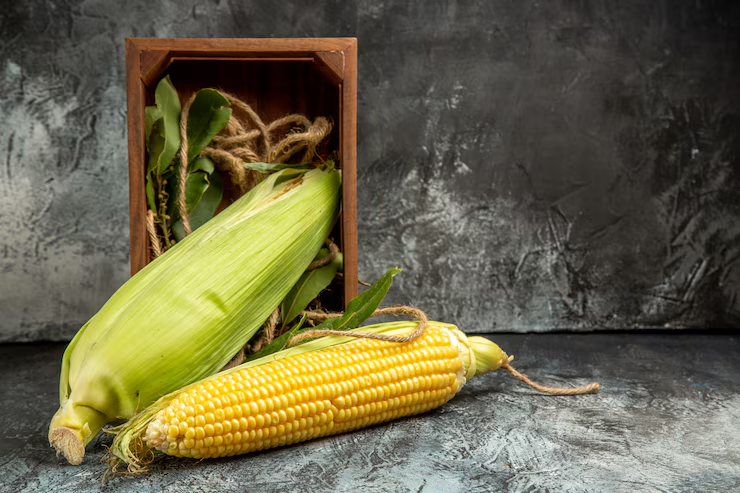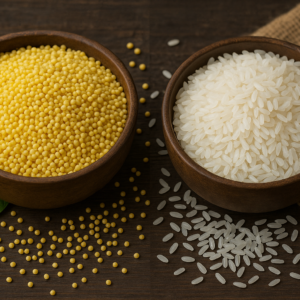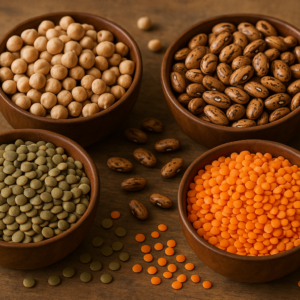Understanding the classification of maize represents a fundamental cornerstone of modern agricultural science and sustainable farming practices. As one of the world’s most versatile and economically important cereal crops, maize classification encompasses multiple dimensions that directly impact agricultural productivity, global food security, and farmer prosperity. This comprehensive exploration delves deep into the scientific, botanical, and practical aspects of maize classification, providing essential knowledge for farmers, agribusinesses, and agricultural stakeholders worldwide.
Introduction: The Global Importance of Maize Classification
Maize, scientifically known as Zea mays, stands as the third most important cereal crop globally, following wheat and rice. The proper classification of maize varieties enables farmers to make informed decisions about crop selection, optimize yields, and ensure sustainable agricultural practices. For agricultural product manufacturers and suppliers like those serving international markets, understanding maize classification proves crucial for delivering superior agricultural solutions that enhance soil fertility and increase productivity.
The classification system for maize addresses the diverse needs of modern agriculture, from animal feed production to human consumption, industrial applications, and specialty markets. This systematic approach empowers farmers and agribusinesses to select appropriate varieties based on specific growing conditions, market demands, and nutritional requirements.
Scientific Classification of Maize: Understanding the Botanical Framework
Taxonomic Classification
The scientific classification of maize follows the established taxonomic hierarchy that provides a structured understanding of this vital crop:
Kingdom: Plantae – Representing all plant life forms Phylum: Magnoliophyta – Flowering plants with advanced reproductive structures Class: Liliopsida – Monocotyledonous plants with parallel leaf venation Order: Poales – Grass-like flowering plants adapted to various environments Family: Poaceae – The grass family encompassing numerous cereal crops Genus: Zea – Distinctive genus characterized by large seed heads Species: Zea mays – The cultivated maize species with numerous subspecies and varieties
This botanical classification system enables agricultural scientists and researchers to understand the genetic relationships between different maize varieties, facilitating the development of improved cultivars with enhanced characteristics such as disease resistance, nutritional content, and yield potential.
Subspecies and Botanical Varieties
Within the species Zea mays, several subspecies exist, each adapted to specific environmental conditions and agricultural requirements. The primary subspecies include:
Zea mays subspecies mays: The most widely cultivated form, representing the majority of commercial maize varieties grown worldwide. This subspecies encompasses numerous varieties adapted to different climatic conditions and agricultural systems.
Zea mays subspecies mexicana: A wild relative native to Mexico, serving as an important genetic resource for breeding programs aimed at developing improved cultivars with enhanced stress tolerance and nutritional profiles.
Zea mays subspecies parviglumis: Another wild subspecies contributing valuable genetic diversity to maize improvement programs, particularly for traits related to environmental adaptation and disease resistance.
Morphological Classification: Distinguishing Maize Types by Physical Characteristics
Kernel Type Classification
The morphological classification of maize primarily focuses on kernel characteristics, which determine the crop’s end-use applications and market value. The major kernel types include:
Dent Corn (Zea mays var. indentata): Characterized by a distinctive indentation at the kernel crown, dent corn represents the most widely grown maize type globally. The kernel contains both hard and soft starch components, with the soft starch shrinking during drying to create the characteristic dent. This variety proves ideal for animal feed production and industrial processing applications.
Flint Corn (Zea mays var. indurata): Also known as Indian corn, flint corn features hard, rounded kernels with minimal denting. The kernels contain predominantly hard starch, providing excellent storage characteristics and resistance to pest damage. This variety thrives in cooler climates and shorter growing seasons, making it suitable for regions with challenging environmental conditions.
Sweet Corn (Zea mays var. saccharata): Distinguished by high sugar content and tender kernels, sweet corn is primarily grown for direct human consumption. The kernels contain elevated levels of water-soluble sugars, creating the characteristic sweet flavor and tender texture when harvested at the optimal stage of maturity.
Flour Corn (Zea mays var. amylacea): Featuring soft, starchy kernels that grind easily into fine flour, this variety has been cultivated for thousands of years by indigenous populations. The kernels contain primarily soft starch, making them ideal for traditional food preparation methods and specialized culinary applications.
Popcorn (Zea mays var. everta): Characterized by small, hard kernels with tough outer shells (pericarps), popcorn varieties possess unique moisture and starch properties that enable the dramatic expansion when heated. The hard kernel structure contains a specific moisture content that creates steam pressure, resulting in the characteristic “popping” phenomenon.
Waxy Corn (Zea mays var. ceratina): A specialized variety containing predominantly amylopectin starch rather than the typical amylose-amylopectin combination. This unique starch composition provides specific industrial applications, particularly in food processing and manufacturing industries requiring modified starch properties.
Plant Architecture Classification
Beyond kernel characteristics, maize classification also considers plant architecture and growth patterns:
Normal Height Varieties: Standard maize plants typically reaching 6-10 feet in height, suitable for conventional farming practices and mechanical harvesting operations.
Dwarf Varieties: Genetically modified or bred varieties with reduced plant height, offering advantages such as reduced lodging risk, improved harvest efficiency, and adaptation to high-density planting systems.
Semi-Dwarf Varieties: Intermediate height varieties combining the benefits of reduced stature with maintained yield potential, representing optimal solutions for specific agricultural systems and environmental conditions.
Maturity Classification: Understanding Growth Cycles and Seasonal Adaptation
Growing Season Categories
Maize varieties are classified based on their maturity requirements, enabling farmers to select appropriate cultivars for their specific growing seasons and climatic conditions:
Early Maturity Varieties (80-95 days): Short-season varieties adapted to regions with limited growing periods, cooler climates, or multiple cropping systems. These varieties enable farmers to maximize land utilization and reduce weather-related risks.
Medium Maturity Varieties (95-115 days): Intermediate-season varieties providing balanced yield potential and adaptability to diverse growing conditions. These varieties represent the most widely grown category, offering reliable performance across various agricultural systems.
Late Maturity Varieties (115-140 days): Long-season varieties with maximum yield potential, suitable for regions with extended growing seasons and favorable climatic conditions. These varieties typically produce the highest yields but require longer frost-free periods.
Full Season Varieties (140+ days): Extended-season varieties maximizing biomass production and yield potential, primarily grown in tropical and subtropical regions with year-round favorable growing conditions.
Heat Unit Requirements
Agricultural scientists classify maize varieties based on accumulated heat units or growing degree days (GDD), providing precise measurements for variety selection and crop planning:
Cool Season Varieties: Requiring 1,800-2,200 GDD, adapted to northern latitudes and higher elevations with shorter, cooler growing seasons.
Moderate Season Varieties: Requiring 2,200-2,600 GDD, suitable for temperate regions with moderate growing seasons and balanced temperature regimes.
Warm Season Varieties: Requiring 2,600-3,000+ GDD, adapted to southern latitudes and lower elevations with extended warm growing seasons.
Use-Based Classification: Agricultural and Industrial Applications
Feed Corn Classification
The majority of global maize production falls into the feed corn category, specifically grown for animal nutrition and livestock feed applications:
High Energy Feed Corn: Varieties bred for maximum starch content and energy density, providing optimal nutrition for livestock and poultry operations.
High Protein Feed Corn: Specialized varieties with elevated protein content, addressing specific nutritional requirements for high-performance animal production systems.
Specialty Feed Corn: Varieties developed for specific animal species or production systems, incorporating unique nutritional profiles or processing characteristics.
Food Grade Corn Classification
Maize varieties specifically cultivated for human consumption undergo rigorous classification based on quality standards and intended uses:
White Corn: Preferred for human consumption in many regions, white corn varieties provide superior visual appeal and neutral flavor profiles for food processing applications.
Yellow Corn: Rich in carotenoids and vitamin A precursors, yellow corn varieties offer enhanced nutritional value and distinctive color characteristics for various food products.
High Lysine Corn: Genetically enhanced varieties with improved amino acid profiles, addressing nutritional deficiencies and supporting enhanced human nutrition programs.
Industrial Corn Classification
Specialized maize varieties serve diverse industrial applications, supporting manufacturing processes and technological innovations:
High Amylose Corn: Varieties containing elevated levels of amylose starch, providing unique functional properties for biodegradable plastics, adhesives, and specialty chemicals.
High Oil Corn: Varieties bred for increased oil content, supporting biodiesel production, food processing, and specialized industrial applications.
High Starch Corn: Varieties optimized for starch extraction and processing, supporting industries ranging from food manufacturing to pharmaceutical applications.
Genetic Classification: Modern Breeding and Biotechnology Applications
Hybrid Classification
Modern maize production relies heavily on hybrid varieties, classified based on their genetic composition and breeding methodologies:
Single Cross Hybrids: Produced by crossing two distinct inbred lines, single cross hybrids provide uniform characteristics and predictable performance but require annual seed purchase.
Double Cross Hybrids: Created by crossing two single cross hybrids, double cross varieties offer reduced seed costs while maintaining hybrid vigor and performance advantages.
Three-Way Cross Hybrids: Intermediate complexity hybrids combining characteristics of both single and double cross varieties, providing balanced performance and economic considerations.
Transgenic Classification
Biotechnology has introduced genetically modified maize varieties with specific traits designed to address agricultural challenges:
Insect Resistant Varieties: Incorporating genes from Bacillus thuringiensis (Bt), these varieties provide built-in protection against specific insect pests, reducing pesticide requirements and supporting sustainable farming practices.
Herbicide Tolerant Varieties: Engineered to survive specific herbicide applications, these varieties enable effective weed management while maintaining crop health and productivity.
Stacked Trait Varieties: Combining multiple genetic modifications, these varieties address multiple agricultural challenges simultaneously, providing comprehensive solutions for modern farming systems.
Regional and Climatic Classification: Adaptation to Environmental Conditions
Tropical Maize Varieties
Developed specifically for tropical and subtropical regions, these varieties address unique challenges associated with high temperatures, humidity, and specific pest pressures:
Lowland Tropical Varieties: Adapted to sea-level tropical conditions with high temperatures and humidity levels throughout the growing season.
Highland Tropical Varieties: Suitable for elevated tropical regions with moderate temperatures and distinct wet/dry seasons.
Semi-Arid Tropical Varieties: Drought-tolerant varieties adapted to regions with limited rainfall and high evapotranspiration rates.
Temperate Maize Varieties
Specifically developed for temperate regions with distinct seasons and moderate temperature ranges:
Northern Adapted Varieties: Short-season varieties suited to regions with limited frost-free periods and cooler growing conditions.
Southern Adapted Varieties: Longer-season varieties adapted to regions with extended growing seasons and higher temperature accumulations.
Transition Zone Varieties: Intermediate varieties suitable for regions experiencing characteristics of both northern and southern growing conditions.
Nutritional Classification: Understanding Grain Quality and Composition
Protein Content Classification
Maize varieties are classified based on protein content and quality, addressing diverse nutritional requirements:
Standard Protein Corn: Containing 8-10% protein, representing the majority of commercial maize varieties grown for general agricultural applications.
High Protein Corn: Varieties containing 12-15% protein, developed for specialized markets requiring enhanced nutritional profiles.
Quality Protein Maize (QPM): Genetically enhanced varieties with improved amino acid balance, particularly elevated lysine and tryptophan content.
Starch Composition Classification
The starch composition of maize kernels determines their functional properties and end-use applications:
Normal Starch Corn: Containing approximately 25% amylose and 75% amylopectin, representing standard commercial varieties.
Waxy Starch Corn: Containing nearly 100% amylopectin, providing unique functional properties for industrial and food processing applications.
High Amylose Corn: Containing 50-70% amylose, offering specialized properties for biodegradable materials and resistant starch applications.
Commercial Classification: Market Categories and Economic Significance
Commodity Grades
Commercial maize classification includes standardized grading systems that determine market value and end-use suitability:
Grade 1: Premium quality corn meeting the highest standards for moisture content, test weight, and foreign material content.
Grade 2: Standard quality corn suitable for most commercial applications with acceptable quality parameters.
Grade 3: Lower quality corn suitable for specific applications with modified processing requirements.
Sample Grade: Corn not meeting established grade standards but suitable for specialized applications or processing.
Specialty Market Classifications
Beyond commodity grades, specialized maize varieties serve niche markets with specific requirements:
Organic Corn: Grown according to certified organic standards, commanding premium prices in health-conscious markets.
Non-GMO Corn: Varieties developed through traditional breeding methods, serving markets with specific requirements for non-genetically modified products.
Identity Preserved Corn: Varieties maintained with strict segregation protocols, ensuring genetic purity and specific trait characteristics.
Future Perspectives: Emerging Classifications and Agricultural Innovation
Climate-Resilient Varieties
Agricultural research continues developing new maize classifications based on climate adaptation:
Drought Tolerant Varieties: Engineered or bred for enhanced water use efficiency and drought stress tolerance.
Heat Tolerant Varieties: Adapted to rising temperatures associated with climate change scenarios.
Flood Tolerant Varieties: Capable of surviving temporary flooding conditions without significant yield losses.
Nutritional Enhancement Classifications
Ongoing research focuses on developing maize varieties with enhanced nutritional profiles:
Biofortified Varieties: Enhanced with elevated levels of essential vitamins and minerals, addressing nutritional deficiencies in developing regions.
Functional Food Varieties: Containing beneficial compounds such as antioxidants, probiotics, or other health-promoting substances.
Allergen-Free Varieties: Developed for individuals with specific dietary restrictions or allergies.
Conclusion: The Strategic Importance of Maize Classification for Sustainable Agriculture
The comprehensive classification of maize represents far more than academic categorization—it serves as the foundation for sustainable agricultural development, food security, and economic prosperity. Understanding these classification systems empowers farmers, agribusinesses, and agricultural stakeholders to make informed decisions that optimize productivity while supporting environmental sustainability.
For agricultural product manufacturers and suppliers committed to delivering superior solutions, mastering maize classification—including the Different Types of Maize/ Corn—enables the development of targeted products that address specific variety requirements and growing conditions. This knowledge supports the creation of sophisticated agricultural solutions that respond to industry changes while maintaining the highest quality standards.
The future of maize classification continues evolving with advancing technology, changing climate conditions, and emerging market demands. By embracing this comprehensive understanding of maize classification, agricultural stakeholders can better serve farmers and agribusinesses, contributing to global food security while promoting sustainable farming practices that protect our environment for future generations.
As agricultural technology continues advancing, the classification of maize will undoubtedly expand to encompass new varieties, improved characteristics, and innovative applications. This ongoing evolution ensures that maize classification remains a dynamic and essential component of modern agricultural science, supporting the continued development of solutions that enhance productivity, sustainability, and farmer prosperity worldwide.
Frequently Asked Questions About Maize Classification
1. What are the main types of maize based on kernel characteristics?
The primary maize types include dent corn with characteristic indentations, flint corn with hard rounded kernels, sweet corn with high sugar content for human consumption, flour corn with soft easily-ground kernels, popcorn with small hard expandable kernels, and waxy corn containing specialized starch compositions for industrial applications.
2. How does maturity classification help farmers select appropriate maize varieties?
Maturity classification categorizes maize varieties by growing season length: early varieties (80-95 days) for short seasons, medium varieties (95-115 days) for balanced production, late varieties (115-140 days) for maximum yields, and full-season varieties (140+ days) for tropical regions with extended growing periods.
3. What distinguishes feed corn from food-grade corn in agricultural classification?
Feed corn is classified for animal nutrition with emphasis on energy content and bulk processing, while food-grade corn meets strict quality standards for human consumption, including specific moisture levels, reduced foreign materials, enhanced nutritional profiles, and specialized processing characteristics for various food applications.
4. How do transgenic maize varieties differ from traditional hybrid classifications?
Transgenic varieties incorporate genetically modified traits like insect resistance through Bt genes or herbicide tolerance, while traditional hybrids rely on conventional breeding between inbred lines. Both classifications focus on performance, but transgenic varieties address specific agricultural challenges through biotechnology rather than natural genetic variation.
5. What role does regional adaptation play in maize variety classification?
Regional classification addresses specific environmental conditions: tropical varieties handle high temperatures and humidity, temperate varieties suit moderate climates with distinct seasons, drought-tolerant varieties serve arid regions, and altitude-adapted varieties perform optimally at specific elevations with corresponding temperature and precipitation patterns.





